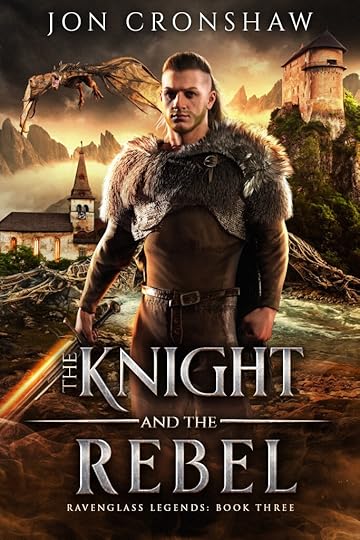Characters Torn Between Cultures: A Fantasy Perspective
The question of identity—who we are and where we belong—lies at the heart of many great fantasy works.
As I wrote The Knight and the Rebel, I became increasingly focused on characters caught between cultures, navigating conflicting loyalties and shifting identities.
Ragnar’s Struggle Between Duty and HeritageRagnar Wolfsbane, as Knight Protector of the Empire, embodies this struggle.
Born to lead one of Wiete’s great clans, he now serves the very empire that conquered his homeland.
Every decision he makes forces him to balance his duty to the Empire with his love for his people and homeland.
His journey examines how people adapt to conquest—whether they resist, accommodate, or attempt to reform the system from within.
Maja’s Identity as a Rebel LeaderRagnar’s sister, Maja, faces a different but equally complex identity crisis.
Leading a rebellion requires her to transcend her upbringing as a noble’s daughter and forge a new identity.
She must unite disparate rebel factions while staying true to her ideals of justice and freedom.
Exploring Divided Identity Through FantasyFantasy provides unique tools to delve into these themes of divided identity.
Fonda Lee’s Green Bone Saga explores the tension between traditional jade warrior culture and modernisation.
Rick Riordan’s half-blood characters are literally caught between divine and mortal worlds, resonating with readers who feel they belong to multiple cultures.
Using Metaphors for Identity ConflictsFantasy often uses metaphorical lenses to explore identity conflicts.
Magic can symbolise cultural power or knowledge.
Different races or nations can reflect cultural clashes without directly corresponding to real-world divisions.
In The Knight and the Rebel, the magic system—with its ability to influence minds and loyalty—acts as a metaphor for how power and culture shape identity.
The Challenge of Avoiding Simple ResolutionsOne of the most difficult aspects of writing characters caught between worlds is avoiding simple resolutions.
It’s tempting to have characters choose one identity over another, but reality is rarely so neat.
Instead, these characters often craft new identities that incorporate elements of both worlds.
R.F. Kuang’s The Poppy War demonstrates this complexity as the protagonist reconciles her humble beginnings with her newfound powers and responsibilities.
The Empire’s Role in Shaping IdentityThe Empire in my story, like many colonial powers, seeks to reshape the identities of the conquered.
It offers power and position to those who adopt Imperial culture while marginalising those who cling to their traditions.
This creates impossible choices—how much of themselves can characters sacrifice for survival or advancement?
Relating Fantasy to Real Human ExperiencesWhat makes these stories compelling is that they mirror real human experiences.
Many readers understand the challenge of navigating between cultures, feeling simultaneously part of and separate from different worlds.
Fantasy allows us to explore these struggles through characters facing even more dramatic versions of these challenges.
Complex Characters and Their Unique JourneysThe most interesting characters are often those who refuse simple answers.
They neither fully reject their origins nor completely assimilate into new cultures.
Instead, they forge new ways of being, drawing from multiple sources of identity.
This complexity makes them relatable and realistic, even in fantastical settings.
Belonging in Resistance MovementsThe question of belonging becomes even more complicated in resistance movements.
How do characters preserve their cultural identity while fighting against overwhelming odds?
How do they avoid becoming defined solely by opposition?
Through Maja’s chapters, I explore how resistance fighters balance preserving their culture with adapting to new realities.
Identity as a Constant NegotiationThe best fantasy recognises that identity isn’t fixed—it’s a constant negotiation between influences and loyalties.
Characters like Ragnar and Maja illustrate different ways of navigating these negotiations, neither entirely right nor entirely wrong.
Share Your ThoughtsWhat are your favourite examples of characters caught between worlds in fantasy?
How can the genre better explore themes of identity and belonging?
Share your thoughts in the comments below.

The post Characters Torn Between Cultures: A Fantasy Perspective appeared first on Jon Cronshaw.



